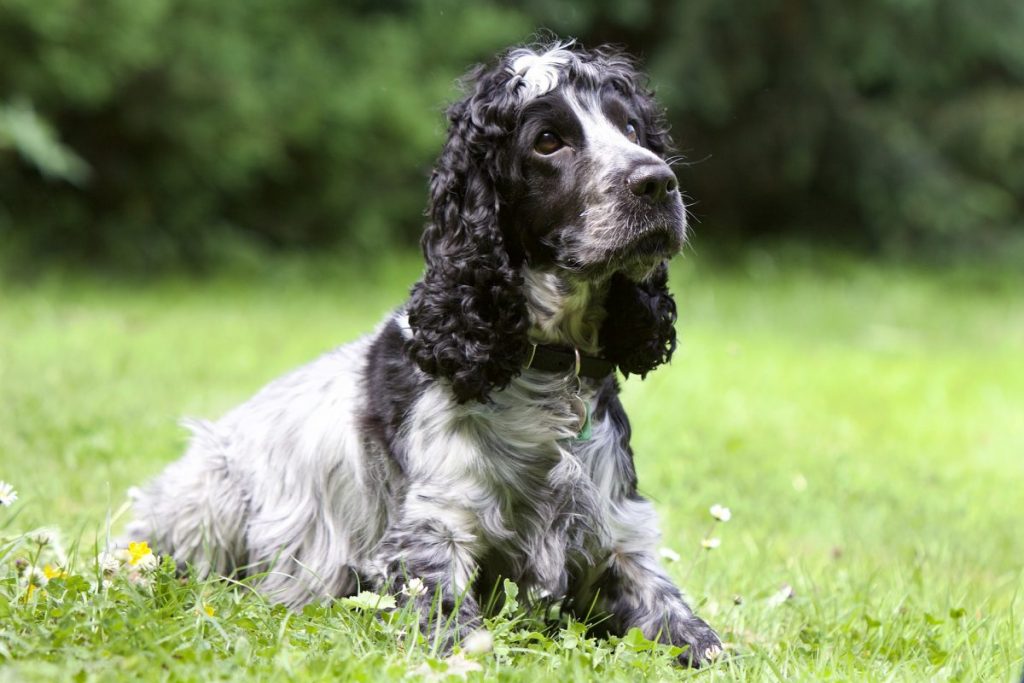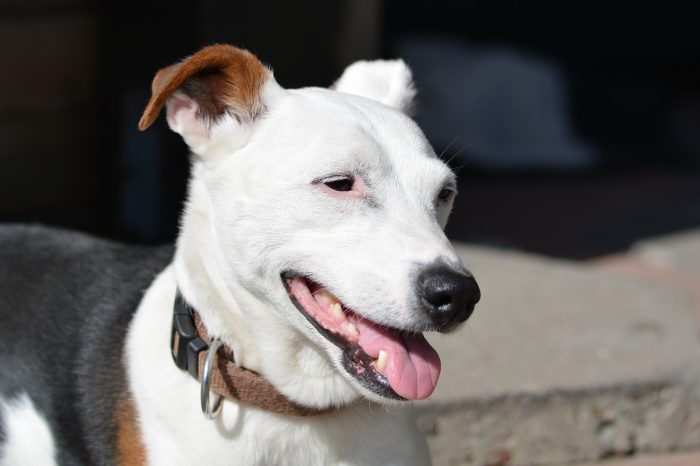Every October across the United States, pink starts popping up everywhere – on ribbons, shirts, hats and even the shoes and wristbands of NFL players. Walks, runs and events for “the cure” become ubiquitous. The month of October and the color pink have come to symbolize one of the most prominent diseases for women across the world – breast cancer.
In fact, about 1 in 8 women will develop breast cancer in their lifetimes. A staggering number. But the mothers, sisters, daughters, aunts and grandmothers in your life aren’t the only family members who suffer from the disease. Though you rarely hear about it, breast cancer can occur in your furry friends too.
Understanding Breast Cancer in Dogs
Like all female mammals, dogs have breasts to feed their young. But unless you have had a pregnant dog, it’s easy to forget because dogs do not have pronounced breasts the way that humans do – except when they are pregnant or nursing. The word “breast” is just another name for the mammary gland – where breast cancer occurs.
What is the Mammary Gland?
Sometimes called the breast, and sometimes called the udder in female animals, the mammary gland produces milk to feed the young. On dogs, they are located along two rows of nipples spanning from the chest to the lower abdominal area.
Both male and female dogs typically have 10 nipples – though male dogs’ mammary glands never develop. The number of mammary glands on a dog doesn’t necessarily reflect the size of their litters.
When Cancer Occurs
Breast cancer occurs most commonly in female dogs who have not been spayed – and usually after they have gone through at least one period of heat and had their mammary glands develop. Spaying dogs can significantly reduce the occurrence of cancer – but only if it’s done before a dog has a chance to go into heat for the first time.
If a dog is spayed after her first heat, the risk for developing cancer goes up by 25%. Spaying reduces hormones – including estrogen – in your dog’s body, which may be the reason risk is reduced. Pregnancy itself doesn’t have any significant effect on a dog’s risk for developing cancer, but going into heat does. That’s why female dogs are typically spayed at around 6 months of age – and as early as 6 weeks if they are rescues.
Though very rare, male dogs can also develop cancerous breast tumors. In the instances where it does occur in males, the prognosis is generally not good.
Like humans, breast cancer in dogs is most common in middle age – which means about 5-10 years old for dogs. And unfortunately, breast cancer is surprisingly common in un-spayed female dogs over 4 years old – about 1 in 4 will contract the disease at some point in their lives.
Do Certain Breeds Have a Higher Instance of Breast Cancer?
All dog breeds and cross breeds are susceptible to developing breast cancer. But certain breeds are more prone to cancer due to genetic disposition. These include: Pointers, Boston Terriers, Cocker Spaniels, Poodles, English Setters, Lhasa Apsos, Brittany Spaniels, and Fox Terriers.
Is It Cancer?
Not every tumor is cancerous. In fact, about 50% of tumors in dogs are benign. There are a variety of types of mammary tumors. Some are small nodules that can be tough to discover, some are medium sized and some are large, aggressive tumors that metastasize quickly.
In some cases, a combination of different cells combine to form a single tumor. These tumors are usually benign, as a single tumor containing more than one type of cancerous cell is very rare. This type of tumor is called a “benign mixed mammary tumor.” There are several other benign tumors of the mammary gland in dogs, including: complex adenomas, fibroadenomas, duct papillomas, and simple adenomas.
Cancerous – or “malignant” tumors – represent the other 50% of mammary tumors in dogs. They are: tubular adenocarcinomas, papillary adenocarcinomas, papillary cystic adenocarcinomas, solid carcinomas, anaplastic carcinomas, osteosarcomas, and fibrosarcomas tumors.
Symptoms of Breast Cancer in Dogs
Cancerous tumors in dogs can vary in size – and the size of the tumor doesn’t necessarily mean it’s cancerous. Tumors in the mammary glands tend to grow quickly, and in an irregular shape. Some tumors will even ulcerate and begin to bleed. If your dog does start to develop a tumor, it’s best to get her examined by a vet.
Your vet will perform a biopsy on the tumor to determine if it is cancerous. To check your dog for breast tumors, examine her breasts by palpitating the area with your fingers. If you feel a growth, and it feels “attached” to your dog’s skin, it’s probably a tumor. Most breast tumors occur closer to the belly, around the 4th and 5th nipple.
If the tumor grows quickly, there’s a good chance it could be malignant – though smaller nodule tumors that may feel like a benign tumor can rapidly grow into malignant ones as well. Again – if you feel any growth in your dog’s mammary glands, immediately make an appointment with your vet.
How Cancer Works
Cancer is scary. There’s no two ways about it. The fear of you or your loved one getting cancer is always present. And if you’re reading this, your loved ones include your dog. Breast cancer – in both people and dogs – is not necessarily fatal. Because it occurs in an area of the body that is easily reachable, breast cancer can be eliminated – if you catch it early.
A vet can remove the cancerous tumor from your dog, and if it hasn’t yet spread to other parts of the body, your dog is likely to make a full recovery. But cancer does its worst when it spreads – and it can spread quickly. Individual cancer cells divide and form duplicates of themselves, then release from the tumor and move throughout the body.
With breast cancer, the cancer cells will spread to a dog’s lymph nodes – and eventually into the lungs. Once cancer gets going, it can spread quickly. It can be difficult to determine if the cancer has spread at first. But when it has spread further, your vet will be able to identify cancer through a chest x-ray or an abdominal ultrasound.
Your vet may also run blood cell count, chemistry profile, and urinalysis tests in an effort to diagnose whether the disease has spread.
Treating Mammary Cancer in Dogs
Treatment of breast cancer in dogs is similar to treatment for humans. There are a few different options that your vet may consider, based on what testing shows and the diagnosis.
Surgery
When a tumor is first identified, surgery is the immediate first step – unless the disease has progressed far enough that the dog will not be able to handle the procedure. The aim, of course, is to remove the cancerous tumor from the dog’s body to eliminate the spread of the disease. If the tumor is caught early enough, this method usually has a high rate of success.
Your vet will determine how much tissue to remove, based on the best available information from tests. In some cases, a successful removal of cancer cells can still result in a relapse. In other cases, your vet may need to also remove the lymph nodes and mammary tissue. This can inhibit the spread of the disease, even when the cancer cells are undetectable.
Some surgery can be difficult, as dogs’ mammary tissue and cell network structure can be hard to reach. Remember, dogs have 5 pairs of mammary glands that run along a network, as opposed to the human mammary structure of two breasts. The good news is – many tumor removal surgeries are successful, and recovery times are remarkably quick – only a week or two in many cases.
Radiation
Radiation therapy is a popular and effective method of eliminating breast cancer in humans. But for dogs, it’s a bit trickier. Radiation therapy works by using specialized equipment to send high doses of radiation into the cancer cells. The radiation makes small breaks in the DNA of the cancer cells, which keeps them from growing and dividing.
The treatment is localized to the exact area of the tumor, because the radiation damages healthy cells as well, causing damage and potentially creating new health issues. Due to the size and anatomy of humans, radiation is often attempted prior to attempting surgery. It’s effective and the human body can handle it.
Dogs, however, are much smaller, making radiation a dangerous treatment. In fact, radiation is attempted in less than 10% of dogs with cancer. It’s an option – but only if the conditions call for it.
Chemotherapy
Like radiation, chemotherapy is not a common approach to cancer elimination in dogs – through emerging technology and continuously advancing medical discoveries, chemotherapy is starting to make some noise as a potential cure for canine cancer.
Chemotherapy is normally administered by intravenous infusions that pump one or more cancer-fighting drugs throughout the entire body. In some cases, it can be administered as a shot or even a pill.
What is the Prognosis of Mammary Cancer in Dogs?
What’s the prognosis? That’s the question on every pet owner’s mind when they learn their dog has cancer. Unfortunately, there are no sure answers. Certain factors will, however, help your vet determine your dog’s prognosis, including:
- The size of the tumor: Big tumors are more serious than small tumors. That’s the long and short of it. Tumors that are larger than a centimeter have a worse prognosis than smaller tumors. As a general rule, the larger the tumor, the more of a chance it as to spread to other parts of the body.
- Tumor positioning: The deeper a tumor is into a dog’s tissue, the worse the prognosis. Deeper tumors allow for more area of tissue for the cancer cells to spread.
- Bleeding tumors: Ulcerated tumors that bleed as they grow larger can be an indicator for a more advanced and aggressive cancer.
- Previous issues: Dogs who have previously experienced rapidly-growing tumors are at higher risk to experience them again.
Can You Do Anything to Prevent Breast Cancer in Your Dog?
Yes – spay her. And do it early. Unless you are planning on breeding your dog, there is no reason not to spay your dog before she reaches her first heat. Your safest bet is to spay your dog at 6 months of age.
The world is filled with dogs who need homes they may never get. Spaying your dog will not only help reduce the homeless dog population – it will reduce her chance of ever developing breast cancer.
What to Do When Your Dog Has Breast Cancer
Reading about cancer is depressing and scary. Learning that your dog has cancer is devastating. But it doesn’t have to be. If there’s one thing in common with cancer survivors – it’s a positive attitude. There’s something about a cancer diagnosis that make both humans and dogs change their perspective and become beacons of positive energy.
There’s no shortage of famous stories of people beating cancer. Everyone knows someone who has had cancer, and most people know someone who has beat it. If you know enough dogs – you probably know a dog that beat it too.
A cancer diagnosis for your dog is not a death sentence. That’s the first thing to remember. Breast cancer can be identified early, treated early, and cured early. Make it a point to check your dog for tumors on a semi-regular basis.
The most important thing to remember is – though she can’t express it like a human can, she’s feeling incredibly positive, and wants you to feel it with her. You know your dog. And you know how she reflects your mood. She’s looking to you for support. Give it to her. Be that source of happiness for her, the way she has been so often to you. That’s not a medical opinion. But you’d be surprised how often it works.








